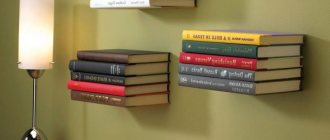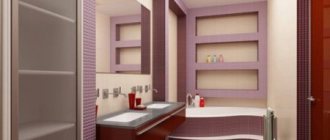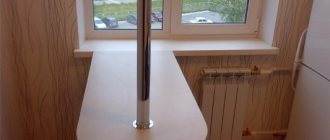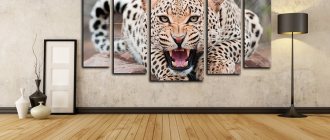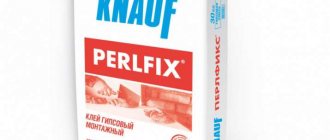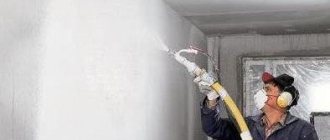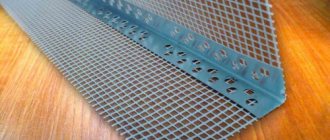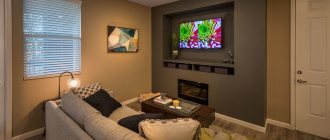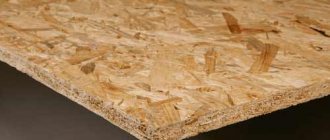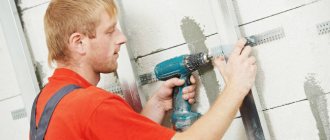Is it possible to hang a TV on drywall?
Yes, you can hang a TV on a plasterboard wall. It will be possible to mount the equipment both with a factory bracket and without a factory mount.
In online articles there is often an opinion that a gypsum board sheet is not able to withstand the load of significant masses. Of course, if you hang several hundred kg, then the single-layer, or even double-layer, cladding will collapse. And the attached object will collapse.
One sheet can easily withstand 10-20 kg without the use of additional structures and parts.
As for TVs, modern models weigh so little that they can even be hung on single-layer drywall. It is more important to use the correct fasteners. It is the dowel that determines how strong the bracket mount and the maximum permissible weight will be.
Choosing a bracket depending on the size and weight of the TV
Hanging is carried out according to a number of rules. Violations will lead to the fact that the fixation will be unreliable, and as a result the device may fall. When choosing a suitable bracket, it is taken into account that all modern fastening elements are produced in accordance with the international standard VESA (Video Electronics Standards Association), which determines the sequence of locations of fixing holes on the bracket and the TV.
Equipment comes in different sizes, so the standard includes several categories:
- VESA MIS-D. For this type of fastening devices, equipment with a diagonal of 10 to 29.9 inches is recommended. The fixing holes can be in two positions: 7.5 x 7.5 or 10 x 10 cm.
- VESA MIS-E. This variation allows you to place devices with screen sizes from 23 to 30.9″ on the wall. The distance between the fastening points is 20 x 10 or 20 x 20 cm.
- VESA MIS-F. Involves installation of equipment with a diagonal of more than 31 inches. For this variety, there are many hole placement patterns, the most common are 20 x 20, 50 x 30 and 90 x 60 cm.
The suspension bracket is selected depending on the location of the mounting holes and the weight of the equipment
To accurately determine the bracket model, you must read the instructions included with the TV, which indicate the required type and size or VESA designation. If there are no documents, you need to measure the distance between the holes with your own hands. It is taken into account that many manufacturers produce products that have several mounting point patterns.
What dowels are needed
To secure light objects, such as photo frames, you do not need to use advanced fasteners for heavy weights. All you need to do is screw in a drywall screw and hang a picture or something else.
If you fasten the TV receiver in this way, the screw will pop out of the drywall and the TV will fall to the floor. Therefore, a regular screw should never be used.
You need a special dowel designed for tangible loads.
- Screw dowel for drywall (DRIVA). No pre-drilling of the sheet is required for fastening. A plastic (or metal) dowel has an external thread, which is used to twist and fix it in plaster. The principle of operation is practically no different from an ordinary screw. But the significant difference lies in the area of the thread (screw). Due to the large protrusions, the screw is securely fixed in the sheet and can withstand a load of 5-10 kilograms or more. Not recommended for use on heavy items. A single fastening with a single-layer gypsum board can withstand 5-6 kg, with a two-layer one – up to 15.
- Butterfly dowel. It has a plastic sleeve, which opens when inserted into the hole. And when the screw is tightened, the side lobes of the sleeve begin to attract. By fixing the sheet on the back side, it will be possible to mount heavier TVs. The permissible load on one dowel for a single-layer material is about 10 kg, for a two-layer material – 25 kg. This is the first option that makes it possible to hang a TV on a plasterboard wall without complex reinforcing structures and actions. You just need to drill holes for the diameter of the dowel. Next, the part is threaded through the hole and twisted so that the petals tightly press the back side of the drywall.
- Dowel “Molly” (or “umbrella”). The holding principle is identical to the “butterfly”. Twisting leads to the opening of metal petals that look like an umbrella. Made of metal, which means the maximum load increases. If the sheathing is made of plasterboard in a single layer, then you can hang equipment up to 35 kg on one fastener.
- Dowel Knauf Hartmut (Knauf Hartmut).
The most reliable option for wall mounting a TV on drywall.
Structurally, it is made of metal fasteners, plastic antennae and a pressure ring. The metal strip rests against the back of the wall, forming a support point for maximum area. With one 12.5 mm thick plasterboard sheet, a load of up to 35 kg can be attached. A two-layer plasterboard wall will withstand 55 kg. This means you don’t have to worry about the fastening being unreliable. Fully fastened with a wide mounting plate (rail) of the bracket on drywall will hold even the heaviest TV receiver.
Load values given are not accurate. Sometimes it turns out to hang things much heavier. But there should always be a margin of safety. Therefore, it is better to use the characteristics from fastener manufacturers.
The varieties "Molly", "butterfly" and Hartmut are intended only for hollow structures. This is necessary to insert the support part into the hole. There must be enough space behind the plasterboard sheathing to accommodate the fastening part of the dowel.
If the gypsum board is leaned against the wall without an intermediate frame, you can use a regular plastic dowel and a screw of the appropriate diameter. Both elements must be quite long in order to be securely fixed to the wall. When choosing parts, the thickness of the drywall is taken into account. The main load with this type of fastening falls on the wall (concrete or brick). And the installation technology does not differ from the standard version. First, holes are made in the wall for installing the bracket. Then the dowels are driven in, after which the bracket is secured to the wall with screws. Then the TV is hung on the wall.
Mounting TVs weighing up to 30 kg
A small TV with a diagonal of up to 32 inches, the weight of which will not exceed 5 kg, can be hung on top of the gypsum board using a butterfly dowel. The main thing is that the fastener element simultaneously pierces the drywall and the metal sheathing profile. Then the load from the TV will be redistributed from the finishing material to the supporting frame of the structure.
p, blockquote 10,1,0,0,0 —>
A TV with a diagonal of more than 42 inches can weigh about 20 kg. Such equipment requires a more secure mount. For these purposes, you can use an umbrella dowel. It received this name because of the way it opens in the structure. By tightening while screwing in the screw, it is guaranteed to hold the stated weight, since the weight of the TV will be distributed over a large area. To ensure high-quality fastening, it is necessary to use at least 4 parts.
p, blockquote 11,0,0,0,0 —>
Television screens weighing from 20 to 30 kg are hung on the wall using the Hartmut mounting system. This is a fastener consisting of plastic and metal elements and a screw. It is ideal for hanging heavy objects, as one product can support up to 55 kg.
p, blockquote 12,0,0,0,0 —>
p, blockquote 13,0,0,0,0 —>
When using fasteners for hollow walls, you must remember that after the dowel is installed, it needs to be unscrewed a little to fully open the inside of the system.
What kind of bracket is needed
The highest reliability when hanging the bracket is achieved:
- increasing the mounting area;
- using a large number of fasteners.
This means that you need to choose a TV bracket that contains at least 4 points for mounting on the wall. It will be a square or large rectangular version.
The larger the size of the wall plate, the greater the strength of the structure when suspended.
How to attach to drywall
The installation instructions consist only of correctly marking the wall, making holes and using fasteners.
From the description above, we conclude that the Hartmut model is the most reliable. Fasteners are much more expensive than analogues for use on drywall. But you can’t skimp on fastening. Poor fixation will cause the TV to fall to the floor, which means the screen will break.
- Place the bracket against the base and use the built-in level to level the fasteners. If there is no level on the mount, use a separate water level.
- Use a pencil to mark the circumference of the holes in the bracket for future holes on the plaster wall.
- Use a regular drill to make holes in the drywall. The diameter of the holes must be sufficient to pass through the steel part Har class=”aligncenter” width=”730″ height=”317″[/img]
- After inserting the Hartmut, press the plastic ring as tightly as possible to the hole.
- Bend the tendrils toward the surface of the drywall and break them off.
- Screw on the bracket with bolts.
- Hang up the TV receiver.
If other fasteners are used, for example, the “butterfly” or “umbrella” options, then the principle of operation is the same. The fastening part is threaded into a hole of a suitable size. Next, the screw is tightened tightly to open the sleeve as much as possible and press the sheet from the rear with the petals. Then the bracket is hung, and then the TV on top.
The option with standard hanging through drywall fasteners is the simplest and most reliable. Even if the wall is covered with one gypsum board sheet, the TV will hold firmly and will not fall off.
Two-layer cladding is considered more reliable. In addition to improved sound insulation, the maximum supported weight of the attached item is increased by default.
But if you need to be as safe as possible, you can use more complex installation technologies. Some of them are described below. The methods listed below will ensure that the TV is secured without the risk of the mount collapsing.
Technical types of fasteners
There are the following variations of wall-mounted restraints, differing in parameters:
- Fixed. The element fits tightly to the surface and is used mainly for small rooms. The cost of the product depends on the manufacturer, but is usually much lower than that of other varieties. A significant drawback is the inability to change the viewing angle.
- Inclined. A modified variation that is suitable for small and medium-sized rooms. The main difference from the previous model is the ability to change the angle by 15–20 degrees.
- Swivel version with tilt function. Modern universal type. The design allows you to change the position of the TV in the horizontal and vertical plane. But such a modification requires a lot of space for fixation and has significant weight, which requires the use of special installation methods.
Tilt-and-swivel brackets are good for rooms with large square footage and high ceilings; in standard city apartments, inclined and fixed models are often sufficient.
Depending on the manufacturer, each type can support a TV of a certain weight, the exact data is indicated in the instructions. When working with gypsum plasterboard surfaces, the fixation method is important: it is recommended to choose devices with a large landing platform.
On a note! Although the accompanying documentation indicates different angles of mobility, they are limited by the diagonal of the screen of the device that is intended to be hung.
If the sheets are not yet attached with screws
It is always recommended to plan the placement of future items and equipment at the renovation stage. Especially if this concerns hinged mounting on non-load-bearing additional walls or partitions (in our case, plasterboard).
The best solution would be to install mortgages. These are wooden bars or boards that are fixed between metal profiles (posts) that form the frame of the wall.
- Profiles of suitable width are mounted between two racks using metal screws. Profiles should not protrude. All connections are made level with the outside of the frame.
- Beams or a solid board are laid into the inner surface of the profiles. The wooden element is attached with screws through the side of the profile.
On a finished wall, mounting holes should be made directly through the gypsum board into the embedded wall.
With individual thin bars there is a high risk of a miss. Therefore, it is better to use a solid wooden board as a mortgage.
It can be secured with the previously mentioned Hartmut dowel or wood screws.
Fastening through plasterboard to the main wall
Required:
- hairpin screw;
- dowels with four-sided expansion to the diameter of the screw;
- perforator;
- drill of the required diameter.
The length of the screw must be greater than the thickness of the entire sheathing - profile frame and drywall.
The general mounting diagram is as follows.
- You need to make a hole in the wall for the dowel directly through the plaster sheet.
- Use the sharp end of the screw to screw the dowel 1-2 turns.
- We try to get into the wall hole through the hole in the sheet and perform the initial placement of the dowel.
- We unscrew the screw.
- Screw the nut onto the metric thread. We insert the side with the nut into the hole and, using the power of a hammer, hammer the rod to the end.
- The screw is then screwed into the dowel. Screwing must be done with a regular key. First, you need to screw two nuts onto the back side of the stud and press them together. This will prevent the nut from turning.
- The last step is to fix the bracket on the studs with nuts.
The only difficulty with this method is selecting the correct length of the mounting screw.
Instead of a stud screw, you can use a regular expansion anchor for concrete foundations.

